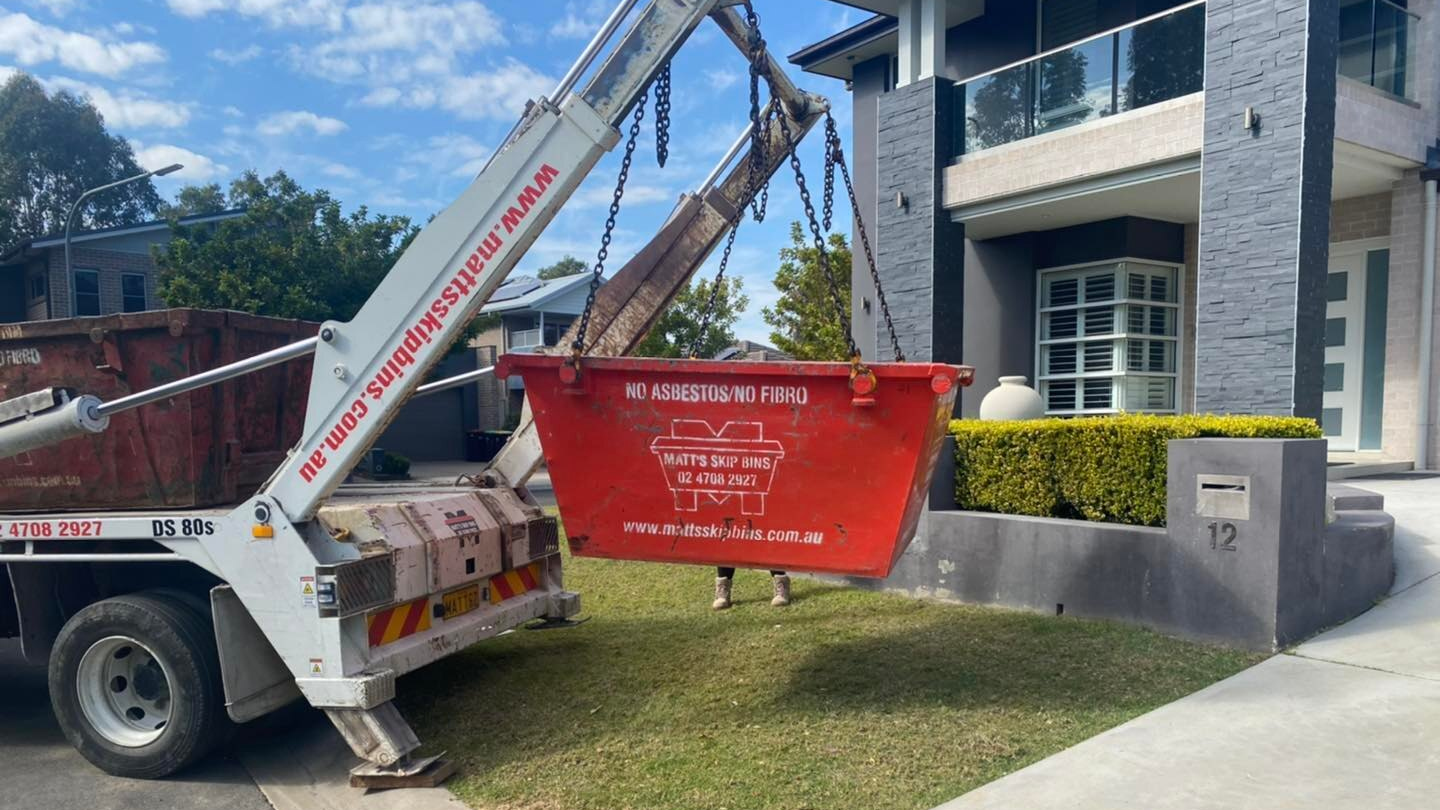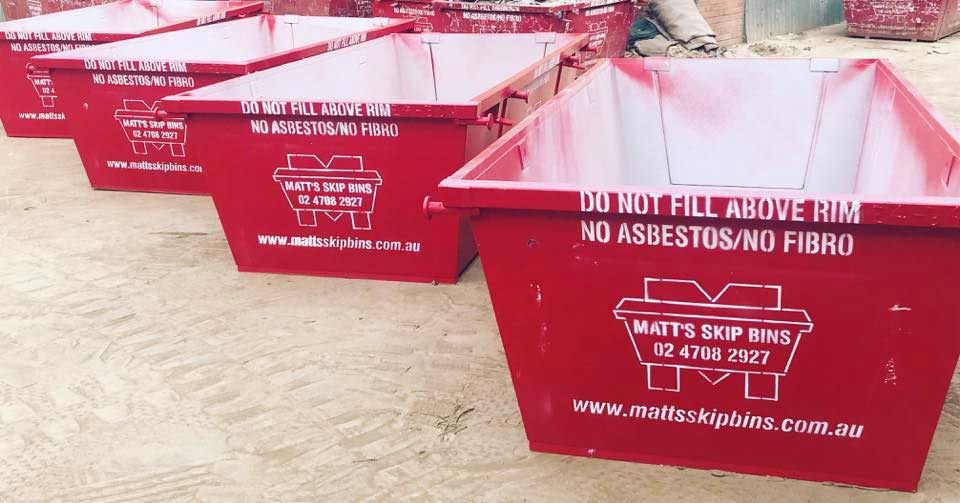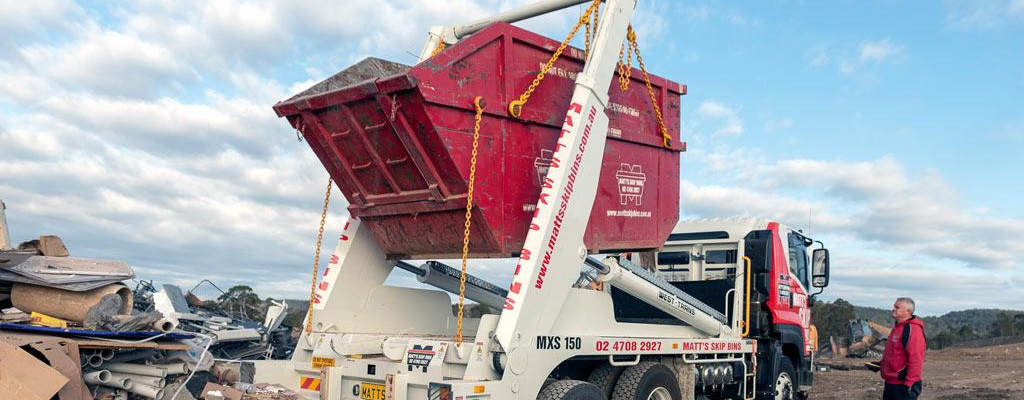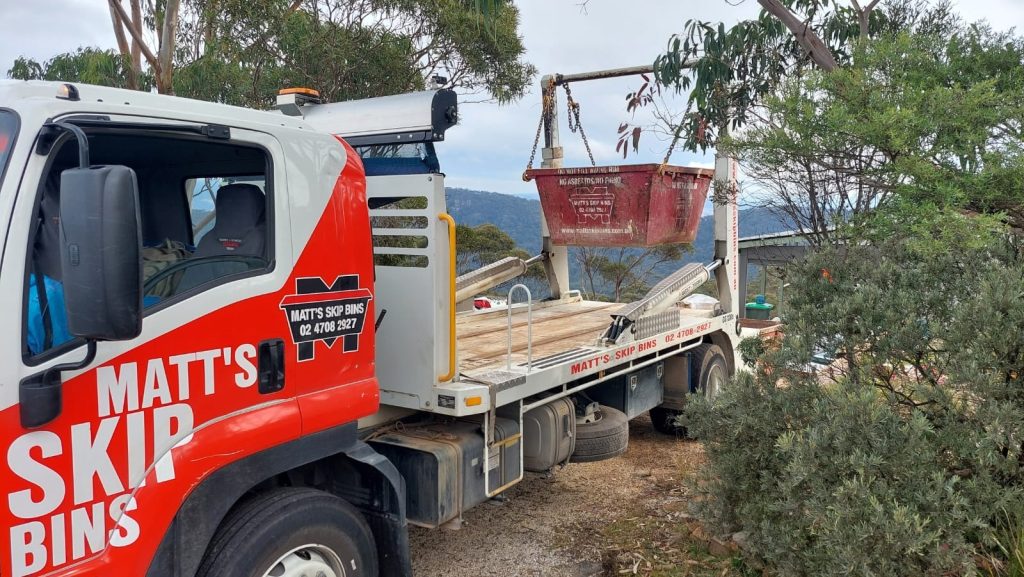
21 May • 5 min Read What’s the Difference Between Front-Load vs Rear-Load Skip Bins
Skips come in different types, sizes, and waste types, making them an incredibly convenient and versatile method of disposing of a wide range of waste materials.
However, there are also different methods for delivering and collecting the skip, which can affect the waste management process. Deciding between a front-load and a rear-load skip bin impacts the placement, volume of waste allowed, and ease of access to the site.
Join us as we look into the main differences between front-load and rear-load skip bins and help you to make an informed decision about which one is best for your work site.
What Are Front-Load Skip Bins?
As their name suggests, front-load skip bins are emptied by lifting them from the front using a specialised front-loading truck. Front-load skips are typically on the smaller side, with the most common sizes ranging from 1.5 to 5 cubic metres (though smaller and slightly larger are available).
Due to their smaller size, front-load skip bins are generally used for small to medium or repetitive jobs, such as light renovations or ongoing commercial use.
They provide easy access for staff to dispose of recyclables, such as general waste paper or cardboard from delivery and freight packaging.
The advantages of a front-load skip bin include their suitability for smaller areas, which means you could place multiple skips side by side to allow for the disposal of different waste types. They are perfectly suitable to be used as a larger version of a residential bin for businesses that need to increase their waste disposal capacity without going overboard with a full-sized construction skip.
What Are Rear-Load Skip Bins?
Rear-load skip bins are lifted off the back of the truck using four chains. These bins are usually larger than front-load skips, with the most common skips measuring from 2 to 12 cubic metres of waste volume, though larger options exist.
Rear-load skips are best used for one-off clean-ups (like deceased estates), heavy or bulky construction waste (including demolitions), or large industrial materials that will not fit safely in a smaller option.
The advantages of a rear-load skip bin include its large volume and incredible durability, able to withstand and hold a full load of broken masonry, unwanted steel, or bulky household items that are no longer required.
Key Differences Between Front-Load and Rear-Load Skip Bins
The main differences between front-load and rear-load skip bins come down to size, placement and waste capacity. Front-load skips can typically be placed in tight spaces, such as behind shops and in alleys next to commercial premises, while rear-load skips require more room for delivery and are more commonly found on construction sites.
Another difference is the type and weight of waste they can handle. For example, our General Waste and Green Waste bins have a weight limit of 180 kg per cubic metre. If you are expecting a higher density than this, opt for larger rear-load skip bins.
Our Dirt & Clay, Bricks & Concrete, and Mixed Building Waste bins have no weight restrictions whatsoever and are perfect for the densest and heaviest types of waste around. It must also be said that some types of waste can never be put in a skip bin, including hazardous waste such as asbestos, chemicals, oils, paints, lithium batteries, and medical waste.
The frequency of collection is another key difference. Front-load bins are only hired out on a regular contract service. For example, 12 months with a fortnightly empty. In contrast, rear-load skip bins have more flexible hire options, such as a long-term service where tradies and businesses can keep the bin onsite for up to 3 months without any extra charges and no monthly fees.
Finally, because they are smaller, front-load bins are typically a bit cheaper than rear-load skips to hire and transport. However, if you account for the waste weight to cost ratio, this figure evens out.
Which Skip Bin Type Is Best for You?
The skip that is right for you depends on the nature of your waste management needs. What waste types are you producing and how often? Is this a one-off disposal or is it ongoing? What bin size will be most suitable, and would a mobile skip bin be an asset? What kind of access does the site have for the bin, especially during delivery and pickup?
Once you have answered these questions, you can begin to narrow down your options.
A front-load skip bin is most suitable for you if you have limited space and are disposing of lighter materials. This also applies if your business or service has a lot of regular waste, either destined for landfill or recyclables like cardboard packaging from stock deliveries.
If you have more space and manoeuvrability on-site and need a heavier load capacity, such as in larger commercial, industrial, or construction industries, opt for a rear-load skip bin. This larger volume will ensure that the long, wide, and dense waste that is produced by industry can be disposed of safely and responsibly.
How to Book the Right Skip Bin
It is one thing to hire the right skip bin, it’s another to hire your skip from a reputable and reliable skip bin service. Matt’s Skip Bins is the first and only place you need to look for all your skip bin needs in Western Sydney. We proudly service a wide range of industries from commercial to industrial and construction, while also serving local residential waste disposal needs.
Whether you know exactly what you want or you are still unsure about which skip bin is perfect for your waste management requirements, get in touch with our friendly team today! Our skip experts can assess your site and the type of waste and get you on the right path to stress-free and efficient waste disposal as soon as possible.
FAQs
What is a front load bin?
A front-load bin is a type of small skip bin best suited for frequent, repeat waste disposal.
What are the disadvantages of skip bins?
Some disadvantages include limited manoeuvrability once the skip is placed, the need for council permits in some areas, weight and size limits and the risk of opting for a bin that is too small.
What is a front lift bin?
A front lift bin is another term for a front-load bin, a bin that is lifted up and over the front of a truck.
What is the difference between a hook bin and a marrel bin?
Hook bins are dragged onto the back of the truck using a large hook arm. Marrel skip bins, on the other hand, are lifted off the back of the truck using four chains. Marrel bins are the most common type of skip bins and are suitable for a wide range of clean-up jobs.
Can I use a front-load bin for a home renovation?
No, a front-load bin isn’t suitable for the weight of home renovation waste. You would need to hire a rear-load skip bin for this type of project.
Do I need council approval for either bin type?
You will need council approval for skip bin hire if you’re intending to place the bin on council/public land. Skips that are wholly on your own private property do not require council approval.




